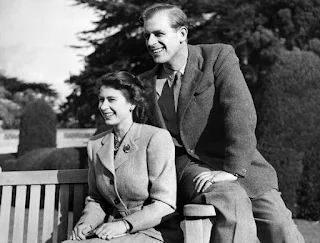However, lately, an Australian doctor named Dr. Deb Cohen-Jones, who lives in Perth, Australia, revealed the health condition of the Queen based on the last photos at her final royal act.
Indeed, the Queen just put a brave face to fulfill her duty as Head of State, though she was on near death, a testimony of her legendary dedication to royal duty.
Dr Deb Cohen-Jones said the bruise on Her Majesty's hand was possibly a sign of declining health. "It looks like there is possibly evidence of peripheral vascular disease", she said. "It's a blood circulation disorder that causes the blood vessels outside of your heart and brain to narrow, block, or spasm", she told FEMAIL.
"It can sometimes result in heart failure. If your peripheral circulation is poor, organs aren't receiving a good blood supply. It can be a sign of multi-organ failure"
The Queen at the drawing room of Balmoral Castle
What is a Peripheral Vascular Disease?
According to the medical definition, it is a slow and progressive circulation disorder. Narrowing, blockage, or spasms in a blood vessel can cause PVD.
Peripheral Vascular Disease may affect any blood vessel outside of the heart including the arteries, veins, or lymphatic vessels.
Organs supplied by these vessels, such as the brain, and legs, may not get enough blood flow for proper function. However, the legs and feet are most commonly affected.
Peripheral vascular disease is also called peripheral arterial disease. Some of the well-known symptoms include intermittent pain, which may present as cramps or muscle fatigue, coldness of the affected body part, numbness, and pins and needles.
The Queen's mottled hand on September 6
The late Queen's hands were mottled or marked with spots, which usually occurs when the heart is no longer able to pump blood effectively.
The blood pressure slowly drops and blood flow throughout the body slows, causing extremities to begin to feel cold to the touch, Crossroads Hospice reported.
Sadly, Dr. Deb confirmed that Queen Elizabeth II "would have been in a lot of pain" if she suffered from the chronic disease because "t looks quite severe".
The Queen indeed "fought" hard to stay physically able on Tuesday, just to fulfill her final act of royal engagement, and fulfill her role as Head of State.
Such a commendable act of Her Majesty. Her incredible devotion to royal duties made her a memorable icon in this generation.
Two days later, she passed away peacefully. Buckingham Palace made her death public at 6:30 in the early evening of September 8.
Read related story:
Rest in Peace Your Majesty
Did the Queen die of Broken heart Syndrome?
Queen Elizabeth II was not heard to have pre-existing illnesses like heart ailment or any vascular diseases all throughout her reign. She was not also diagnosed with any chronic illnesses in the past, thus, it came as a surprise that her health gradually deteriorated in 2021, six months after the death of her beloved husband, Prince Philip, Duke of Edinburgh.
Honeymoon in Broadlands. Princess Elizabeth and Prince Philip, November 1947
Was it just a coincidence? Or Her Majesty suffered from Broken heart syndrome. Here, we have to tackle what is Broken heart syndrome.
Broken heart syndrome, also known as stress cardiomyopathy or takotsubo cardiomyopathy, is a real condition. It is basically caused by a sudden physical or emotional stress.
According to Mayo Clinic, Broken heart syndrome is a temporary heart condition that's often brought on by stressful situations and extreme emotions.
The Duke of Edinburgh and the Queen in Balmoral. Photo taken by Sophie, the Countess of Wessex
What kinds of stress can cause broken heart syndrome?
- Grief from the death of a loved one and other large or meaningful loss (eg, divorce/relationship, job, home, money, beloved pet).
- Good news (e.g., surprise parties, winning the lottery).
- Bad news
- Intense fear (e.g. public speaking, armed robbery, car accident).
- Extreme anger
The Queen, Prince Philip, Princess Anne, Prince Charles, and the infant Prince Andrew pictured in Balmoral Castle ground
Dr. Deb Cohen-Jones, an Australian GP, spoke to FEMAIL as published by the
Daily Mail, about what losing a loved one can do to the health of their partner - and whether it's medically possible to die from a broken heart. She also explained the stress on the body caused by grief.
"There is no strict science around it. But it's definitely an observed phenomenon", she said. "It's more about losing your "will" than it is about your health in some ways".
1947 - official announcement of their engagement. 2017 - 70th wedding anniversary
Another world leader who possibly died from Broken heart syndrome was former US President, George H.W. Bush. He died on November 30, 2018, just seven months after the death of his wife, Barbara Bush.
Prince Philip's death on April 9, 2021, may have been a precursor to Queen Elizabeth II's death at 96 - as the monarch struggled to cope without her "strength and stay".
Official portrait of The Queen and The Duke of Edinburgh, 2001
Though the Queen never made her grief public or what she felt following the death of her husband of 73 years, she had spoken about how she missed him, addressing him as "my beloved Philip", in her public speeches after Prince Philip's death.
The Queen was very vocal in saying publicly that Prince Philip was "my strength and stay". Following the Duke of Edinburgh's death, the Queen's health rapidly deteriorated.
The Queen and Prince Philip in Balmoral, summer 1972
We are deeply saddened by her passing but grateful enough to know she's now in peace and in a good place. We are glad we came to know her. Her legacy of dedicated public service is such an inspiration.
Queen Elizabeth II was the first British monarch since the restoration to die outside England after her ancestor, King George I, who died in 1727 after suffering from a stroke in Hanover, Germany while on a vacation.


















0 Comments